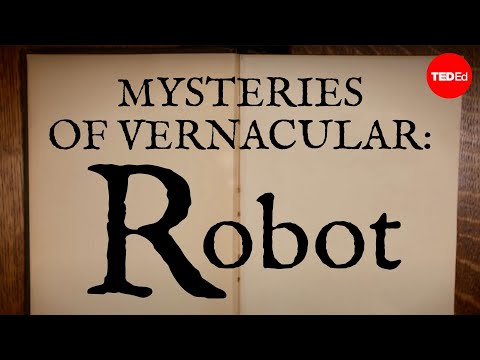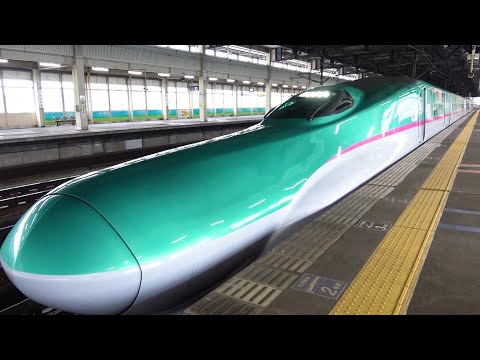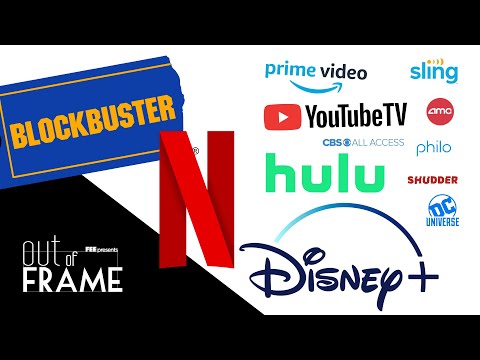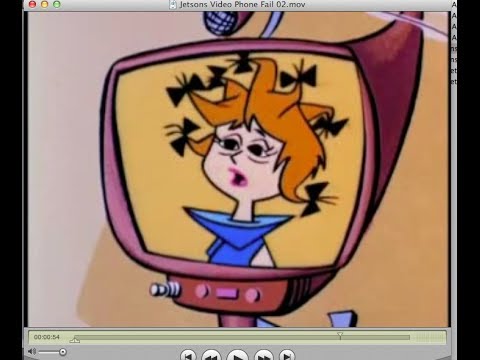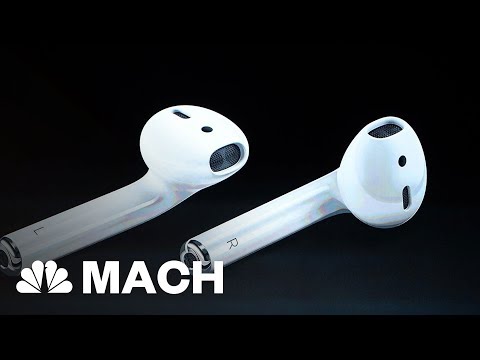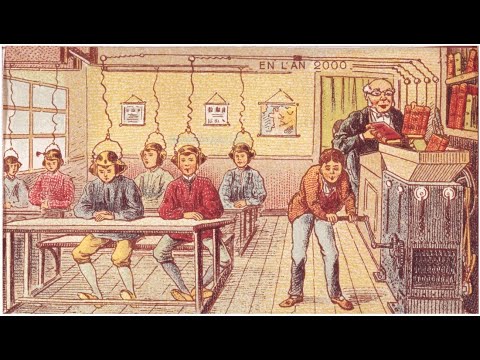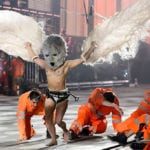Sure, many scholars have considered the future impact of new technology. Robots and space travel, as you’ll see below, factor in prominently. But many past guesses were remarkably inaccurate. Take, for example, the decades-old belief that we would someday live underwater and ride giant seahorses. As the saying goes, you can’t win ’em all. Still, in these ten instances, past prognosticators were remarkably on point with their guesses about life down the road. While they may not recognize the specific context of our modern world, these old-time predictions proved shockingly shrewd!
10 Space Travel
It shouldn’t be a surprise that humans in the past predicted space travel. For centuries, scientists and philosophers have thought about traveling to other dimensions. And since the moon and stars have always been within sight, even before the advent of the telescope, they’ve long been targets for future hopes. Watch this video on YouTube In 1661, English philosopher Joseph Glanvil hypothesized that traveling to the moon would one day be as easy as sailing to America. Of course, sailing the Atlantic was far more difficult back then. Thus, his moon comparison arguably isn’t that far off base. Two centuries later, Jules Verne took it further with From the Earth to the Moon. Even though it was written in 1865, Verne’s theory on traveling into space proved remarkably similar to how launches and moon landings are actually performed in the modern era. Thinkers in the early 20th century built on Verne’s theories too. One artist in the 1920s depicted space travel being undertaken by flying taxis powered by propellers. To them, the thought of a quick jaunt to the moon would be as easy as hailing a cab for a ride across town. Of course, space travel isn’t quite that easy in the modern era. But it’s not far off, either. Today, the most privileged among us are able to book tickets to fly outside our atmosphere. So in some ways, old predictions about future space taxis were right on the money![1]
9 Robots, Robots, Robots
Philosophers have pondered artificial intelligence for centuries. Of course, the computing technology we have today wasn’t always part of those theories. But long ago, thinkers wondered how automation might change life. In 1921, Czech writer Karel Čapek wrote Rossum’s Universal Robots. The play was about mechanization overtaking manual labor. His use of the Czech word “robota,” meaning forced labor, was purposeful. The word stems from a Slavic source meaning “slave.” And its use quickly caught on. English speakers developed the word “robot” to mean any artificial labor replacement. Watch this video on YouTube Čapek’s concerns about mechanization extended to other thinkers as well. Many philosophers of the late 19th and early 20th centuries worried about automated work. And now, robots continue to alter factory work worldwide. Those technological developments have changed the labor landscape just as Čapek first guessed. Other robot predictions have been more lighthearted, though. A little more than a century ago, French artists imagined robots as helpful domestic helpers. One artist designed images showing small robots doing automated cleaning inside the home. As anyone with a Roomba knows, the high-tech helper can be a welcome aid in mechanizing unwanted domestic chores![2]
8 High Speed Trains
Before cars became common across the world, trains were the main mode of transportation. So it makes sense that people making predictions would point to them as the future. In 1900, an American engineer named John Elfreth Watkins made a series of guesses about the 21st century. One of them was the development of high-speed trains. Watkins said locomotives would one day be able to top 120 miles per hour (193 kph). To his credit, he certainly wasn’t wrong. In fact, Watkins actually underestimated the technology. Watch this video on YouTube Today, the United States’ Acela Express can reach 150 miles per hour (240 kph). Bullet trains in Japan can go even faster than that, with some reaching 200 miles per hour (320 kph). Massive high-speed train infrastructure has been deployed in China and other places too. Many engineers were pondering the potential of high-speed rail traffic in the early 20th century. Luxury auto brand Bugatti got serious about the future of high-speed trains during the Great Depression as auto sales fell during that difficult time. The company started producing Autorails, individual train cars meant for long voyages. Just as Watkins predicted three decades earlier, these Autorails reached 120 miles per hour. But the idea didn’t take off after the Great Depression ended. Quickly, cars came back into favor. They have been king ever since. Still, with modern-day governments seriously considering one-lane high-speed tunnel traffic, it’s clear those old train plans were ahead of their time.[3]
7 Digital Media And Citizen Journalism
Watkins’s 21st-century predictions went further than train travel. He also pondered the future of photography. Still a somewhat new technology at the time, cameras were cumbersome. Pictures took a long time to develop. But looking ahead one hundred years, Watkins wondered if the process couldn’t go much faster. “Photographs will reproduce all of nature’s colors,” he wrote in the 1900 analysis, predicting today’s crystal-clear photography. “Photographs will be telegraphed from any distance,” he added. “If there be a battle in China a hundred years hence, snapshots of its most striking events will be published in the newspapers an hour later.” Of course, Watkins had no conception of today’s internet. But his predictions on photo-sharing sound eerily similar to modern digital media. Plus, Watkins’s then-crazy claim that pictures could be published “an hour later” was right on the money too. With worldwide access to social media, citizen journalists can report on events and publish content quickly. Within seconds, it is reproduced on screens all over the world. Watkins would be shocked at how quickly information flows today. But he was correct in his prediction![4]
6 Factory Farming vs. Farm-to-Table Food
During his life, FE Smith was a friend of British politician Winston Churchill. Smith was also one of the more outspoken men of his age. In the 1920s, he published a book laying out predictions of what the world would be like in one hundred years. Some of those predictions are dead wrong, of course. But others have proven to be on the nose. One of those was Smith’s take on food production. Watch this video on YouTube He claimed that synthetic food produced in labs would take over “in civilized lands.” Lab-grown food was meant to feed an ever-expanding population, Smith argued. “From one ‘parent’ steak of choice tenderness,” he wrote, “it will be possible to grow as large and juicy a steak as can be desired.” With synthetic meat production expanding today, Smith’s prediction appears wise. Plus, the spread of highly efficient factory farms over the last several decades has largely replaced the stereotypical local farmer. For Smith, he felt individual farming would only survive “as a rich man’s hobby.” In the 21st century, he argued, only men in “wealthy rejuvenation” would be able to “boast that the bread he eats is made from wheat which grows in his own fields.” Modern-day food production hasn’t quite gotten to that point. However, farm-to-table restaurants serving artisanal, locally-sourced dishes are flourishing in high-end neighborhoods. Thus, relative wealth offers the choice of better and more natural ingredients. In that way, Smith’s past prediction on gentlemen farmers runs an interesting parallel.[5]
5 Netflix and Chill
At-home entertainment was very limited a century ago. Besides books, there was little by way of diversion. Radio was in its infancy, and television was still a ways off. But experts back then were already thinking of a fascinating future. In 1921, inventor Charles P. Steinmetz published an article predicting the spread of streaming services. He didn’t call them that, of course. But his words were eerily accurate. “There will be no need to go to some congested, poorly ventilated hall for a musical concert,” Steinmetz wrote. “Music will be supplied by a central station and distributed to subscribers… while sitting in our libraries at home.” Watch this video on YouTube Even before Steinmetz, people were thinking about home entertainment. A series of postcards from 1900 predicted moving images would one day be beamed into people’s homes. More than a century later, Netflix and Hulu made good on that thought. And entertainment in concert halls had a future focus too. In one postcard set, viewers are shown going as normal to a show. However, instead of watching an orchestra perform live, they watch as a conductor pushes buttons on a machine that controls an automated band. Maybe modern-day electronica DJs owe a bit of their success to that early foresight.[6]
4 Smart Phones, Zoom Calls, and FaceTime
Streaming services weren’t the only technologies considered for home delivery. Way back when, futurists wondered if work calls could be accomplished from the domestic domicile too. French cartoons from the early 1900s show people chatting from long distances using video conferencing. In those images, the technology is projected on a wall by a gramophone. That’s far from modern-day Zoom calls and FaceTime, of course. But the steampunk style clearly showed thinkers were already pondering its potential. Visionaries through the 1920s were hard at work on these ideas. In 1926, Nikolai Tesla predicted video conferencing would one day be made available. Just a year later, a very rough prototype was demonstrated by inventors. In the years since, science fiction writers grabbed the proverbial ball and ran with it. Countless books in the genre showed futuristic video calling as a means of communication. For a long time, that technology seemed to be merely a dream. But by the 21st century, Skype reigned supreme. From there, FaceTime grew quickly. Zoom’s massive use during the pandemic was a watershed moment. And live streaming on sites like Instagram and Twitch has taken video conferencing worldwide. Now, the idea of video calls via smartphones and laptops is second nature. Tesla and other old-time visionaries have been proven correct.[7]
3 Drone Warfare
Remember our earlier reference to Churchill’s pal FE Smith? That synthetic food prediction from the 1920s wasn’t his only direct hit. Smith also predicted a high-tech future of drone warfare. Of course, at the time of his predictions, Smith had just lived through World War I. The brutal battle saw tens of millions of casualties in half a decade. So it makes sense Smith would think about ways to wage war using less manpower. In his futuristic screed, the politician wrote of “entirely unmanned” tank warfare directed by soldiers “in a distant control room” far away from the battle. Or, Smith said, tank captains could fly far overhead and monitor progress below. “The commanders of tank forces will be carried in the air above their commands,” he wrote, “able to watch the course of operations and control their progress by wireless telephony.” This, he argued, would make war “more humane.” Smith had no conception of today’s drone warfare. But what he’s describing sounds remarkably similar to unmanned vehicles used in modern-day battles. Plus, his theory on tank commanders watching the war from above seems similar to how high-powered satellites and cameras are used to track battles from long distances today. Whether war is now “more humane” may still be up for debate. But there’s no doubt Smith was on the money with his theory on unmanned vehicles in battle.[8]
2 Earbuds, Bbt Make It 1953
When Ray Bradbury published Fahrenheit 451 in 1953, the book was hailed as a dystopian warning about censorship. It also offered up meaty science fiction fare. And as it would turn out decades later, Bradbury’s legendary work even predicted aspects of future technology. In the book, protagonist Guy Montag tires of his work as a fireman destroying works of literature. As he sets about preserving and promoting literacy instead, he uses technology unheard of at the time. In one particular scene, Montag uses a hidden earpiece to communicate with Faber, the book’s English professor. Of course, wireless technology was decades away at that point. And having a piece fit into one’s ear wasn’t on anyone’s radar in the early 1950s. But Bradbury took it all the way. In a later passage explaining more about these hidden earpieces, the author wrote, “in her ears the little seashells, the thimble radios tamped tight, and an electronic ocean of sound, of music and talk and music and talk coming in, coming in on the shore of her unsleeping mind.” At the time, the idea of a seashell-shaped earbud must’ve come from another universe. But decades later, Silicon Valley visionaries would make that a reality. Now, “thimble radios” like this are commonplace. And just as Bradbury predicted, these earbuds really do pipe in endless music and talk for the wearer.[9]
1 Electric Ride-Share Scooters
When French artists created the “En L’An 2000” art series between 1899 and 1910, they were trying to figure out what life might look like in the new millennium. As we’ve discussed already, some of these visionaries predicted things like the Roomba. Others were keen on figuring out new modes of transport. And one artist in particular, Jean-Marc Côté, created a near-perfect prediction regarding ride-share scooters and e-bikes. In his art, Côté showed the people of Paris riding around the streets on small, wheeled contraptions. To be fair, he was more keen on the tiny rides being skates instead of scooters. But they were electric and powerful, and his intention was to show people would get around with ease. In one sense, Côté didn’t have to wait long to see them come to fruition. By the 1920s, people were already riding around on early powered scooters. In fact, some of those little vehicles look remarkably similar to what we know today. In recent years, companies like Uber, Bird, and Lime have mass-deployed scooters across major urban centers. To anyone from 1900, seeing these wheeled e-buggies might give some sense of a prediction well made. We can only guess what the time travelers would think of their ride-share technology and QR code use, though.[10]

